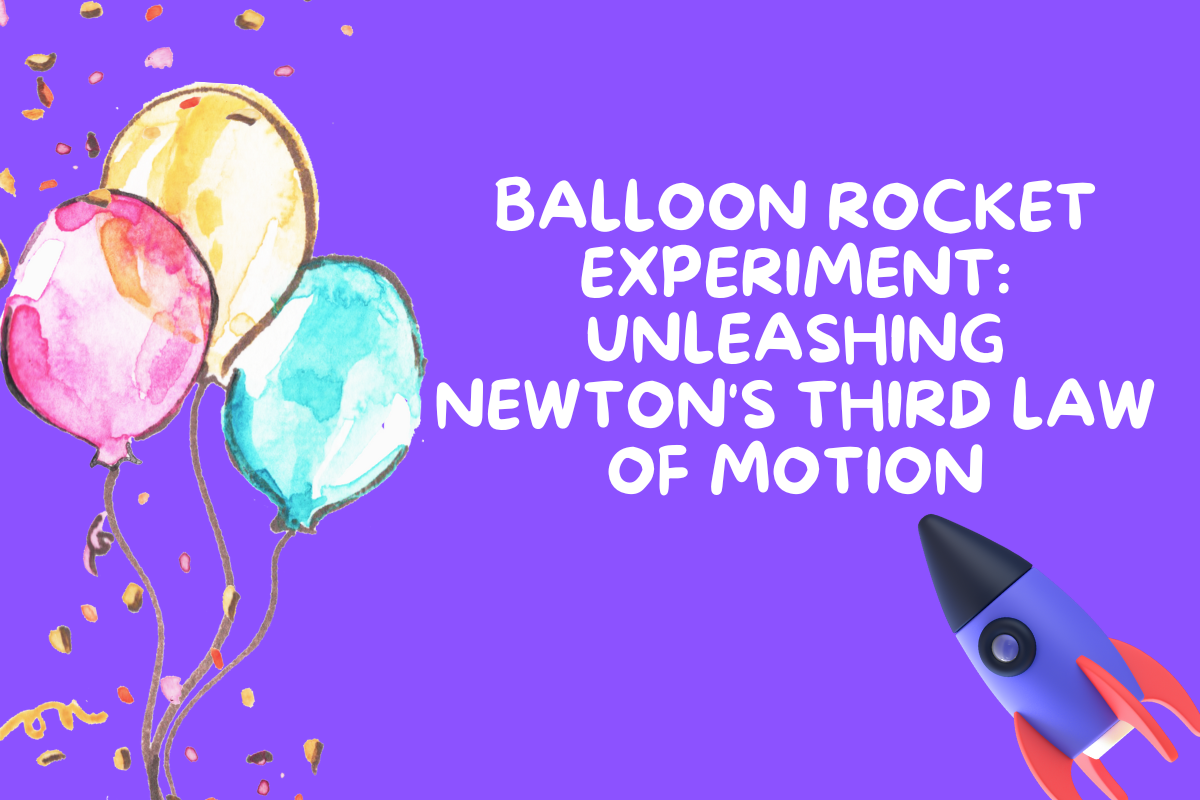Balloon Rocket Experiment: Unleashing Newton's Third Law of Motion
By~ Scholar Planet
Created At: 26 Aug, 2023

The world of science is filled
with wonders waiting to be explored, and one of the most exhilarating ways to
engage in scientific discovery is through hands-on experiments. The balloon
rocket experiment is a fantastic example that not only captivates the
imagination but also teaches us about the fundamental principles of physics,
specifically Newton's Third Law of Motion. Let's take a journey into the
exciting world of the balloon rocket experiment and uncover the scientific
magic behind it.
The Rocket's Launchpad: Materials
You'll Need:
- A balloon
- A long piece of string or
fishing line
- Plastic straw
- Tape
- Scissors
Unveiling Newton's Third Law:
Before we delve into the experiment,
let's grasp the essence of Newton's Third Law of Motion. This law states that
"for every action, there is an equal and opposite reaction." This law
underlies the functioning of rockets, jets, and even the simple balloon rocket
we're about to create.
Constructing the Balloon Rocket:
Step by Step:
1. Tie one end of the string
between two fixed points, creating a taut "launchpad."
2. Slide the plastic straw onto
the string, ensuring it can move freely along the length of the string.
3. Inflate the balloon, but do
not tie it yet.
4. Tape the uninflated end of the
balloon to the straw.
5. Hold the straw at one end of
the string and let go of the balloon's tied end.
As you release the balloon, it
will zoom along the string, demonstrating Newton's Third Law of Motion. The air
escaping from the balloon creates a force that propels the balloon forward,
while the balloon's reaction is an equal and opposite force pushing backward
against the string and straw.
Learning Through Launch:
Teachable Moments:
1. Newton's Third Law: The
experiment offers a tangible way to experience Newton's Third Law of Motion. By
observing the balloon's movement, participants witness the law in action,
showcasing the connection between action and reaction.
2. Propulsion Principles: The
balloon rocket demonstrates the principle of propulsion – the force that moves
a vehicle forward. This concept is crucial for understanding how various modes
of transportation, from rockets to cars, operate.
3. Forces and Motion: The
experiment introduces the concept of forces and motion in a practical manner.
It shows how forces interact to create motion, illustrating that motion is a
result of unbalanced forces.
Safety Precautions:
- When releasing the balloon,
ensure there's enough distance from people or objects to prevent collisions.
- Avoid over-inflating the
balloon to prevent bursting.
In
conclusion, the balloon rocket experiment is a dynamic and interactive way to
grasp the principles of Newton's Third Law of Motion. As the balloon races
along the string, it carries with it the thrill of discovery and the
exhilaration of learning, making science truly come alive in an awe-inspiring
way. So, prepare your balloon, secure your string, and get ready to launch into
the fascinating world of physics!
